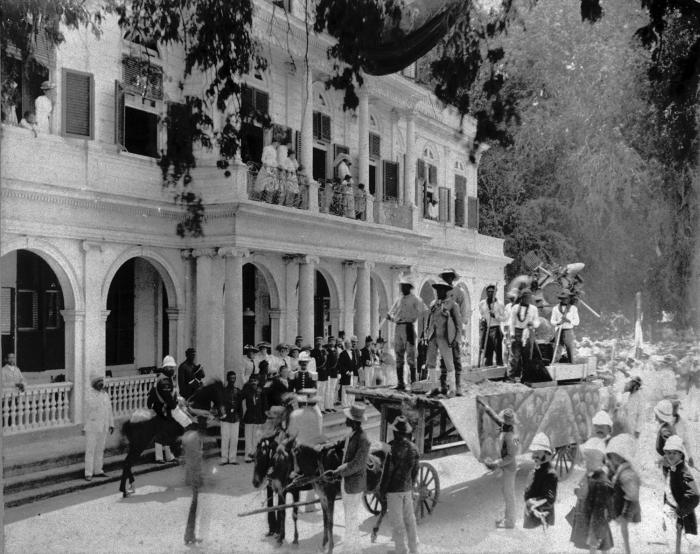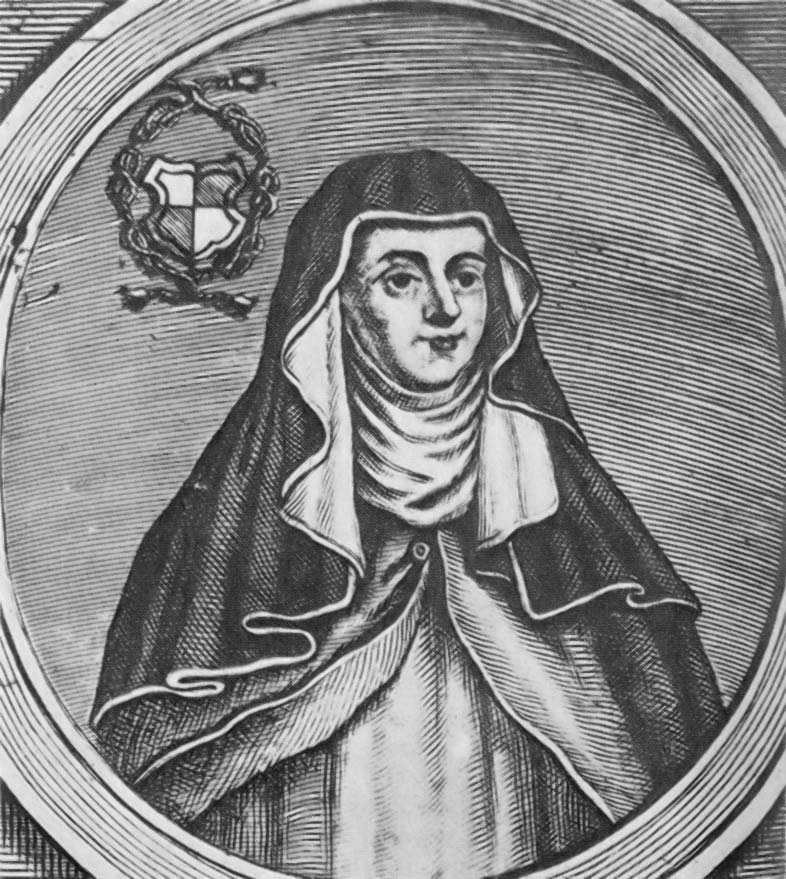|
Liturgical Drama
Liturgical drama refers to medieval forms of dramatic performance that use stories from the Bible or Christian hagiography. The term was widely disseminated by well-known theater historians like Heinrich Alt (''Theater und Kirche'', 1846), E.K. Chambers (''The Mediaeval Stage'', 1903) and Karl Young. Young's two-volume monumental work about the medieval church was especially influential. It was published in 1933 and is still read today, even though his theories have been rejected for more than 40 years. Many college textbooks, among them the popular books by Oscar Brockett, propagated the theory of "liturgical drama" even into the 21st century. Critique Evolution model In his 1955 book on the origins of theater, Benjamin Hunningher refuted the notion that plays developed out of the liturgy. He noted that the church setting of the Mass does not allow for entertainment, and Christian theologians had severely criticized theater artists for centuries. As McCall wrote in 2007:West ... [...More Info...] [...Related Items...] OR: [Wikipedia] [Google] [Baidu] |
Bible
The Bible (from Koine Greek , , 'the books') is a collection of religious texts or scriptures that are held to be sacred in Christianity, Judaism, Samaritanism, and many other religions. The Bible is an anthologya compilation of texts of a variety of forms originally written in Hebrew, Aramaic, and Koine Greek. These texts include instructions, stories, poetry, and prophecies, among other genres. The collection of materials that are accepted as part of the Bible by a particular religious tradition or community is called a biblical canon. Believers in the Bible generally consider it to be a product of divine inspiration, but the way they understand what that means and interpret the text can vary. The religious texts were compiled by different religious communities into various official collections. The earliest contained the first five books of the Bible. It is called the Torah in Hebrew and the Pentateuch (meaning ''five books'') in Greek; the second oldest part was a coll ... [...More Info...] [...Related Items...] OR: [Wikipedia] [Google] [Baidu] |
Tableau Vivant
A (; often shortened to ; plural: ), French language, French for "living picture", is a static scene containing one or more actors or models. They are stationary and silent, usually in costume, carefully posed, with props and/or scenery, and may be Theatre, theatrically lit. It thus combines aspects of theatre and the visual arts. A tableau may either be 'performed' live, or depicted in painting, photography and sculpture, such as in many works of the Romanticism, Romantic, Aestheticism, Aesthetic, Symbolism (arts), Symbolist, Pre-Raphaelite, and Art Nouveau movements. In the late 19th and early 20th centuries, tableaux sometimes featured ('flexible poses') by virtually nude models, providing a form of Erotica, erotic entertainment, both on stage and in print. Tableaux continue to the present day in the form of living statues, street performers who busk by posing in costume. Origin Occasionally, a Mass (liturgy), Mass was punctuated with short dramatic scenes and paintin ... [...More Info...] [...Related Items...] OR: [Wikipedia] [Google] [Baidu] |
Medieval Drama
Medieval theatre encompasses theatrical performance in the period between the fall of the Western Roman Empire in the 5th century and the beginning of the Renaissance in approximately the 15th century. The category of "medieval theatre" is vast, covering dramatic performance in Europe over a thousand-year period. A broad spectrum of genres needs to be considered, including mystery plays, morality plays, farces and masques. The themes were almost always religious. The most famous examples are the English cycle dramas, the York Mystery Plays, the Chester Mystery Plays, the Wakefield Mystery Plays, and the N-Town Plays, as well as the morality play known as ''Everyman''. One of the first surviving secular plays in English is ''The Interlude of the Student and the Girl'' (c. 1300). Due to a lack of surviving records and texts, low literacy in the general population, and the opposition of the clergy, there are few surviving sources from the Early and High Medieval periods. However, by ... [...More Info...] [...Related Items...] OR: [Wikipedia] [Google] [Baidu] |
Medieval Theatre
Medieval theatre encompasses theatrical performance in the period between the fall of the Western Roman Empire in the 5th century and the beginning of the Renaissance in approximately the 15th century. The category of "medieval theatre" is vast, covering dramatic performance in Europe over a thousand-year period. A broad spectrum of genres needs to be considered, including mystery plays, morality plays, farces and masques. The themes were almost always religious. The most famous examples are the English cycle dramas, the York Mystery Plays, the Chester Mystery Plays, the Wakefield Mystery Plays, and the N-Town Plays, as well as the morality play known as ''Everyman''. One of the first surviving secular plays in English is ''The Interlude of the Student and the Girl'' (c. 1300). Due to a lack of surviving records and texts, low literacy in the general population, and the opposition of the clergy, there are few surviving sources from the Early and High Medieval periods. However, by ... [...More Info...] [...Related Items...] OR: [Wikipedia] [Google] [Baidu] |
Mary, Mother Of Jesus
Mary; arc, ܡܪܝܡ, translit=Mariam; ar, مريم, translit=Maryam; grc, Μαρία, translit=María; la, Maria; cop, Ⲙⲁⲣⲓⲁ, translit=Maria was a first-century Jews, Jewish woman of Nazareth, the wife of Saint Joseph, Joseph and the mother of Jesus. She is a central figure of Christianity, venerated under titles of Mary, various titles such as virgin or queen, many of them mentioned in the Litany of Loreto. The Eastern Orthodox Church, Eastern and Oriental Orthodox, Church of the East, Catholic, Anglican, and Lutheran churches believe that Mary, as mother of Jesus, is the Theotokos, Mother of God. Other Protestant views on Mary vary, with some holding her to have considerably lesser status. The New Testament of the Holy Bible, Bible provides the earliest documented references to Mary by name, mainly in the canonical Gospels. She is described as a young virgin who was chosen by God in Christianity, God to annunciation, conceive Jesus through the Holy Spirit ... [...More Info...] [...Related Items...] OR: [Wikipedia] [Google] [Baidu] |
Caroline Walker Bynum
Caroline Walker Bynum, FBA (born May 10, 1941, in Atlanta, Georgia)Caroline Walker Bynum short CV at website (retrieved June 29, 2009). is a Medieval scholar from the . She is a University Professor ''emerita'' at |
Wienhausen Abbey
Wienhausen Abbey or Convent (german: Kloster Wienhausen) near Celle in Lower Saxony, Germany, is a community of Evangelical Lutheran women, which until the Protestant Reformation, Reformation was a Cistercians, Cistercian Catholic nunnery. The abbey owns significant artworks and artifacts, including a collection of tapestry, tapestries and the earliest surviving example of a type of eyeglasses. History The abbey was established in Wienhausen, from the town of Celle, on the bank of the Aller (Germany), Aller, in or about 1230 by Agnes von Landsberg, daughter-in-law of Henry the Lion, Duke of Saxony and Bavaria. According to the Wienhausen town chronicle, this was the relocation of a monastic foundation made 10 years previously on a site at Nienhagen, Lower Saxony, Nienhagen several kilometers away, which was moved because it had been built on marshland. In 1233 the foundation of the nunnery here was officially confirmed by Konrad II of Riesenberg, bishop of Hildesheim, who transf ... [...More Info...] [...Related Items...] OR: [Wikipedia] [Google] [Baidu] |
Performance
A performance is an act of staging or presenting a play, concert, or other form of entertainment. It is also defined as the action or process of carrying out or accomplishing an action, task, or function. Management science In the work place, job performance is the hypothesized conception or requirements of a role. There are two types of job performances: contextual and task. Task performance is dependent on cognitive ability, while contextual performance is dependent on personality. Task performance relates to behavioral roles that are recognized in job descriptions and remuneration systems. They are directly related to organizational performance, whereas contextual performances are value-based and add additional behavioral roles that are not recognized in job descriptions and covered by compensation; these are extra roles that are indirectly related to organizational performance. Citizenship performance, like contextual performance, relates to a set of individual activity/co ... [...More Info...] [...Related Items...] OR: [Wikipedia] [Google] [Baidu] |
Quem Quaeritis?
The Latin question ''Quem quaeritis?'' (Latin for ''"Whom do you seek?"'') refers to four lines of the medieval Easter liturgy that later formed the kernel of the large body of medieval liturgical drama, which is also known as Visitatio sepulchri ("Visit to the tomb"). It was introduced into the liturgy in the tenth century, as a new genre of liturgical ceremony:Nils Holger Petersen, "Les textes polyvalents du Quem quaeritis à Winchester au xe siècle", ''Revue de musicologie'', 86.1 (2000:105–118), with extensive bibliography in notes. Translation: The lines were then followed by a sung chorus of Hallelujahs. The ''Quem Quaeritis?'' was an exchange of one question, one answer, and one command between the Angels at Christ's tomb and the three Marys, the Virgin Mary, Mary Magdalene, and Mary, the sister of Lazarus. The specific question "Quem quaeritis?" "Whom do you seek?" is not in fact in Luke 24, where it is implied but omitted: "Why seek ye the living among the dead? H ... [...More Info...] [...Related Items...] OR: [Wikipedia] [Google] [Baidu] |
Commentary (philology)
In philology, a commentary is a line-by-line or even word-by-word explication usually attached to an edition of a text in the same or an accompanying volume. It may draw on methodologies of close reading and literary criticism, but its primary purpose is to elucidate the language of the text and the specific culture that produced it, both of which may be foreign to the reader. Such a commentary usually takes the form of footnotes, endnotes, or separate text cross-referenced by line, paragraph or page. Means of providing commentary on the language of the text include notes on textual criticism, syntax and semantics, and the analysis of rhetoric, literary tropes, and style. The aim is to remove, lessen or point out linguistic obstacles to reading and understanding the text. If a text is historical, or is produced within a culture assumed to be of limited familiarity to a reader, a broader range of issues may require elucidation. These include, but are by no means limited to, bio ... [...More Info...] [...Related Items...] OR: [Wikipedia] [Google] [Baidu] |
Christian Hagiography
A hagiography (; ) is a biography of a saint or an ecclesiastical leader, as well as, by extension, an adulatory and idealized biography of a founder, saint, monk, nun or icon in any of the world's religions. Early Christian hagiographies might consist of a biography or ', a description of the saint's deeds or miracles (from Latin ''vita'', life, which begins the title of most medieval biographies), an account of the saint's martyrdom (called a ), or be a combination of these. Christian hagiographies focus on the lives, and notably the miracles, ascribed to men and women canonized by the Roman Catholic church, the Eastern Orthodox Church, the Oriental Orthodox churches, and the Church of the East. Other religious traditions such as Buddhism, Hinduism, Taoism, Islam, Sikhism and Jainism also create and maintain hagiographical texts (such as the Sikh Janamsakhis) concerning saints, gurus and other individuals believed to be imbued with sacred power. Hagiographic works, especiall ... [...More Info...] [...Related Items...] OR: [Wikipedia] [Google] [Baidu] |
.jpg)






